1203
Unusual creatures
Most of the species of living beings unrecognizable because of their uniqueness, special abilities, appearance, and the fact of their suschestvovaniya.My not pay attention to the diversity and uniqueness of many living organisms exist today. This photo galleries, we will show unusual beings of the planet. Narwhal or Unicorn (lat. Monodon monoceros) - monodontidae mammal of the family, the only species of the genus narwhals. The length of the body of the adult narwhal 3, 8-4, 5 m, newborns about 1, 5 m. Weight of males reaches 1, 5 tons, of which about one-third the weight of fat; females weigh about 900 kg.

Mudskipper (lat. Periophthalmus) - genus of fish of the family of gobies (Gobiidae).
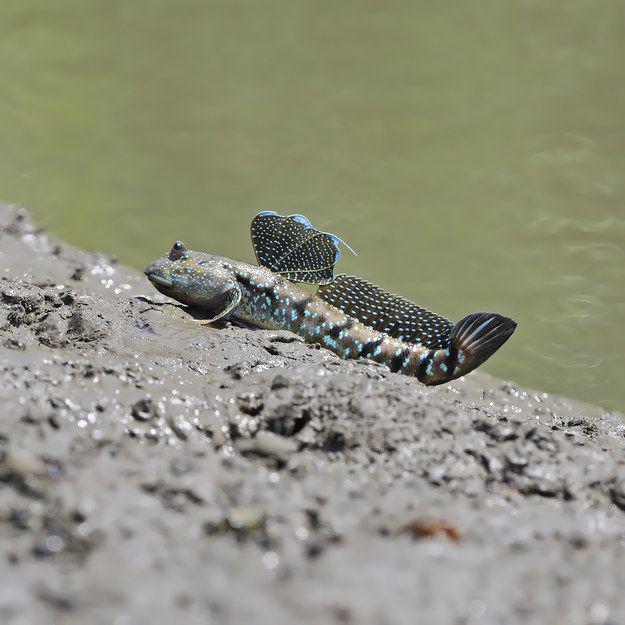
Geoduck - species of marine bivalve molluscs of the family Hiatellidae. These large (up to 1, 5 kg weight) organisms have very long fused siphons (up to 1 m in length) and a relatively small (up to 20 cm), a fragile shell. It is considered the largest burrowing clam. The name «geoduck» («gweduck») is borrowed from the Indians and means "to dig deep»
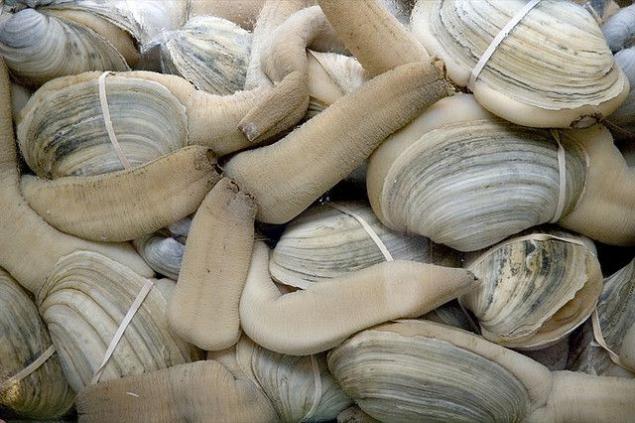
Grimpoteuthis (lat. Grimpoteuthis) - kind of deep-sea octopuses.
Typically, in adulthood, these octopuses reach a length of 20 centimeters, but the biggest ever recorded representative of this kind was a length of about 180 cm and weighed about 6 kilos.

Brevicipitidae (Lat.) - A family of frogs.
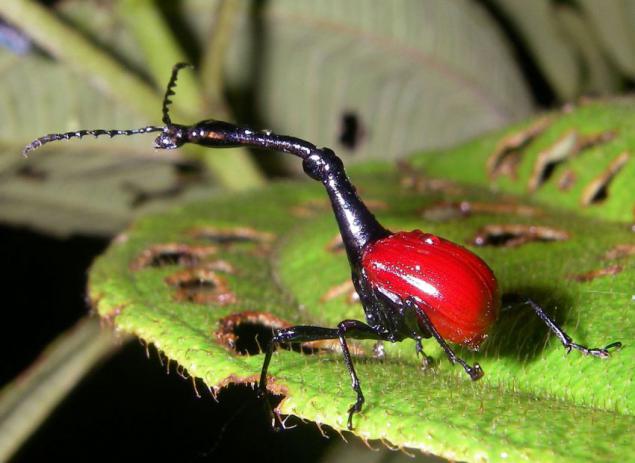
Weevil giraffe (trachelophorus giraffa (Lat.)) - The kind of Coleoptera of the family attelabidae.
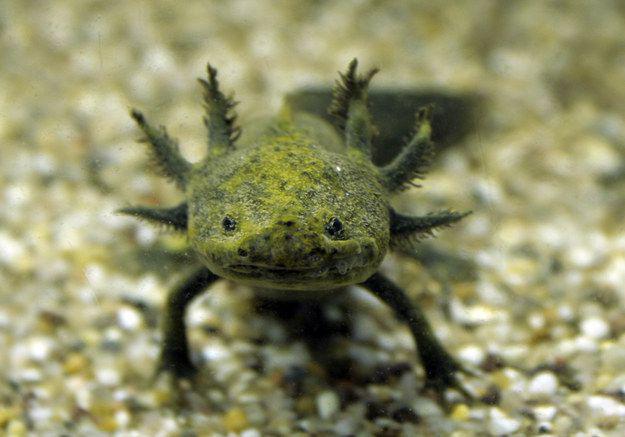
Axolotl (Axolotl) - neotenic larvae of some species ambistom, amphibians of the family ambistomovyh (Ambystomidae) detachment tailed (Caudata). In a literal translation from the Aztec language axolotl (axolotl) - «Water Dog (Monster)»
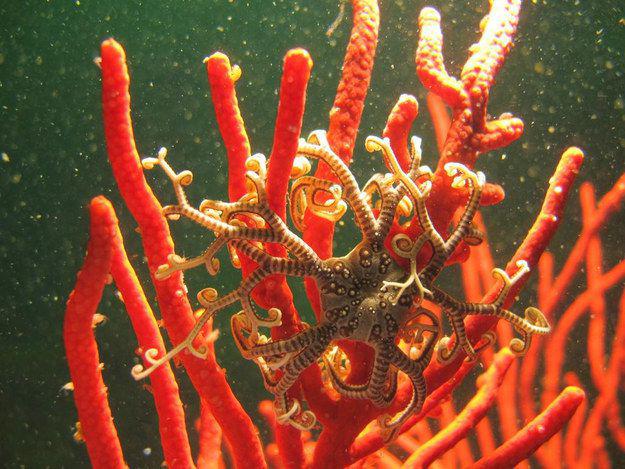
Brittle or zmeehvostki (lat. Ophiuroidea) - a class of marine benthic animals such as echinoderms. His name got a peculiar way of movement - when they crawl along the bottom of their "hands" wriggle like snakes. Russian name "zmeehvostki" is a carbon copy of the scientific names of brittle stars (from the Greek. Ὄφις - snake, οὐρά - tail).

Mantis, or mantis shrimp (lat. Stomatopoda) - crustaceans squad.

Spirobranchus giganteus (Lat.) - A kind of polychaetes of the family Serpulidae. Widely distributed in the tropical seas of the World Ocean.

Sea Bat (lat. Ogcocephalus). Distributed widely than the Mediterranean Sea. They live in subtropical and tropical seas, at the bottom, usually to a depth of 100 m.

Imago - dark brown mole. On both ends of the body of the caterpillar a pair of fleshy otrostkov- "horns" with hairs, stings containing poison. Thrust can be painful and cause swelling, nausea, rash, which held a few days.
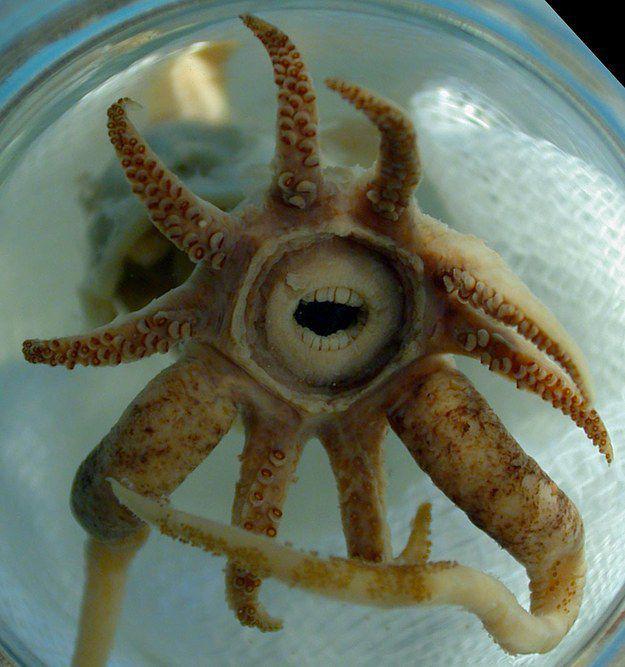
Pugaportsinus (lat. Chaetopterus pugaporcinus) - deep-sea worm that in the competition for the title of "most strange worm" is easily overtake all his rivals. And not only because of the bizarre appearance. This amazing inhabitants of the ocean depths in narrow circles is known as the "flying buttocks." Its existence, the world learned more recently, in 2007, when scientists at the Research Institute Aquarium Monterey Bay in California have found and described about ten copies of living in the waters of Monterey Bay.
--img13--
Toothy squid (official name - Promachoteuthis Sulcus). This is not your teeth, and a special fold of tissue that covers the beak of a mollusk. And that's not all. This type is represented by one singular, so about it, little is known. Kalmar managed to catch the German research vessel Walther Herwig in the southern part of the Atlantic Ocean. He was pulled to the surface from a depth of 1750-2000 meters.
--img14--
Source: www.buzzfeed.com

Mudskipper (lat. Periophthalmus) - genus of fish of the family of gobies (Gobiidae).

Geoduck - species of marine bivalve molluscs of the family Hiatellidae. These large (up to 1, 5 kg weight) organisms have very long fused siphons (up to 1 m in length) and a relatively small (up to 20 cm), a fragile shell. It is considered the largest burrowing clam. The name «geoduck» («gweduck») is borrowed from the Indians and means "to dig deep»

Grimpoteuthis (lat. Grimpoteuthis) - kind of deep-sea octopuses.
Typically, in adulthood, these octopuses reach a length of 20 centimeters, but the biggest ever recorded representative of this kind was a length of about 180 cm and weighed about 6 kilos.

Brevicipitidae (Lat.) - A family of frogs.

Weevil giraffe (trachelophorus giraffa (Lat.)) - The kind of Coleoptera of the family attelabidae.

Axolotl (Axolotl) - neotenic larvae of some species ambistom, amphibians of the family ambistomovyh (Ambystomidae) detachment tailed (Caudata). In a literal translation from the Aztec language axolotl (axolotl) - «Water Dog (Monster)»

Brittle or zmeehvostki (lat. Ophiuroidea) - a class of marine benthic animals such as echinoderms. His name got a peculiar way of movement - when they crawl along the bottom of their "hands" wriggle like snakes. Russian name "zmeehvostki" is a carbon copy of the scientific names of brittle stars (from the Greek. Ὄφις - snake, οὐρά - tail).

Mantis, or mantis shrimp (lat. Stomatopoda) - crustaceans squad.

Spirobranchus giganteus (Lat.) - A kind of polychaetes of the family Serpulidae. Widely distributed in the tropical seas of the World Ocean.

Sea Bat (lat. Ogcocephalus). Distributed widely than the Mediterranean Sea. They live in subtropical and tropical seas, at the bottom, usually to a depth of 100 m.

Imago - dark brown mole. On both ends of the body of the caterpillar a pair of fleshy otrostkov- "horns" with hairs, stings containing poison. Thrust can be painful and cause swelling, nausea, rash, which held a few days.

Pugaportsinus (lat. Chaetopterus pugaporcinus) - deep-sea worm that in the competition for the title of "most strange worm" is easily overtake all his rivals. And not only because of the bizarre appearance. This amazing inhabitants of the ocean depths in narrow circles is known as the "flying buttocks." Its existence, the world learned more recently, in 2007, when scientists at the Research Institute Aquarium Monterey Bay in California have found and described about ten copies of living in the waters of Monterey Bay.
--img13--
Toothy squid (official name - Promachoteuthis Sulcus). This is not your teeth, and a special fold of tissue that covers the beak of a mollusk. And that's not all. This type is represented by one singular, so about it, little is known. Kalmar managed to catch the German research vessel Walther Herwig in the southern part of the Atlantic Ocean. He was pulled to the surface from a depth of 1750-2000 meters.
--img14--
Source: www.buzzfeed.com
























